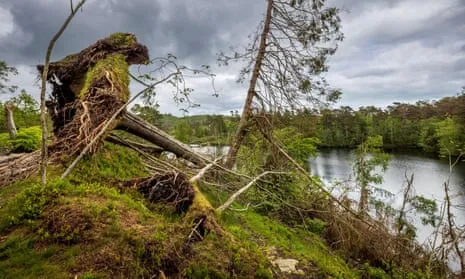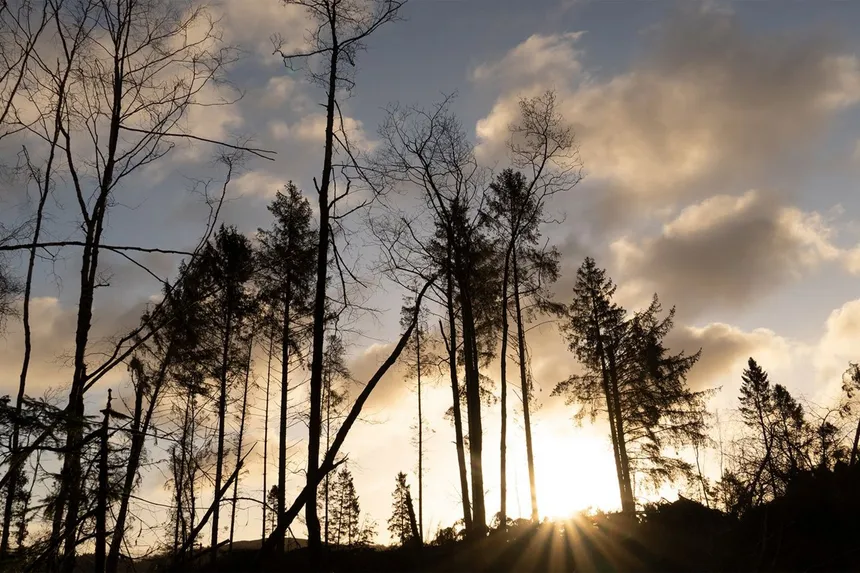As severe weather continues to batter the UK and Europe, research has revealed that forests containing a diverse range of tree species are more resilient to extreme weather events than monocultures. Simulations created by scientists found that forests with two or three tree species are, on average, 35% more likely to withstand storms than those with only one species. The type of trees also plays a crucial role, with slow-growing hardwood species such as oak proving more resistant to high winds than fast-growing conifer species like pine.
The increased frequency of extreme weather events is a worrying trend, as the climate crisis exacerbates the impact of storms. Warm air holds more moisture, which in turn fuels intense winds and flooding. The destruction of trees in storms is becoming a growing concern for foresters, with winter storms in 2021 destroying around 12,000 hectares of forest in Britain.
Lead researcher Dr Julien Barrere from the French National Research Institute for Agriculture, Food and Environment (Inrae) emphasizes the importance of promoting diversity and slow-growing tree species in forest management practices. “Monocultures of fast-growing species such as pine, although valuable from an economic point of view, are more susceptible to storm damage,” he explains. “In a context of increasing storm losses across the continent, our study therefore argues for forest management practices that promote diversity and slow-growing tree species.”

The benefits of greater tree diversity are particularly pronounced in extreme conditions, such as hot and dry Mediterranean regions and cold areas of northern Scandinavia. Researchers created simulations based on data from over 90,000 real forest plots in Europe to examine how they resist and recover from extreme weather events. While fieldwork is still needed to confirm the findings, the simulations support observations from conservationists who have noted that monoculture conifer plantations are more vulnerable to storms.
Experts agree that planting trees in mixtures is the way forward, as Prof Martin Lukac from the University of Reading points out. “Trees growing in a mixture not only produce more biomass, but the forests they create are better able to ride out the impact of adverse factors, including wind storms.” Ancient oaks, for example, lower their branches as they age to increase their stability, and conservationists aim to leave these limbs intact rather than cutting them back.
The study’s findings are timely, considering the recent severe weather in the UK. Prof John MacKay from the University of Oxford emphasizes the importance of acting quickly, as diversifying forest composition can take many years to produce benefits given the time it takes for trees to establish and develop. However, he notes that it is crucial to act in the short term to ensure the long-term resilience of forests.
The significance of this research extends beyond climate resilience, as species diversity has been shown to provide additional benefits, including resistance to pests and diseases, as well as drought. As the Royal Botanic Gardens in Kew highlights, utilizing findings like these is vital to create terrains that will thrive in a changing climate. By planting the right tree in the right place, we can build climate resilience and ensure the long-term health of our forests.

